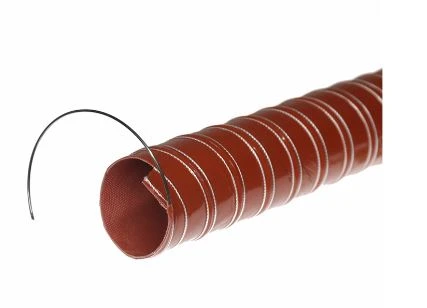fiber reinforced pvc
Fiber Reinforced PVC Enhancing Performance through Innovation
Polyvinyl chloride (PVC) is one of the most widely used synthetic plastic polymers in the world. Known for its versatility, durability, and cost-effectiveness, PVC is found in a multitude of applications, from construction materials to consumer products. However, like many materials, PVC has limitations, particularly in terms of strength, rigidity, and impact resistance. This is where fiber reinforcement comes into play, leading to the development of fiber reinforced PVC (FRPVC).
What is Fiber Reinforced PVC?
Fiber reinforced PVC combines the unique properties of PVC with various types of fibers—most commonly glass or carbon fibers—to create a composite material that boasts superior mechanical properties compared to standard PVC. The addition of fibers significantly enhances the tensile strength, impact resistance, and overall durability of the material, making it suitable for more demanding applications where traditional PVC may fail.
Properties and Benefits of Fiber Reinforced PVC
1. Increased Strength and Durability One of the most significant benefits of FRPVC is its enhanced strength. The incorporation of fibers helps distribute stress more evenly throughout the material, reducing the likelihood of fractures and cracks. This makes it ideal for applications in construction, automotive parts, and other industries where load-bearing capabilities are essential.
2. Improved Impact Resistance Regular PVC materials can become brittle over time, especially under extreme temperatures. FRPVC maintains flexibility and resilience, effectively absorbing impacts and reducing the risk of damage from external forces. This characteristic is particularly valuable in applications such as pipes, fittings, and protective coverings.
3. Lightweight Composition Despite its strength, FRPVC remains lightweight, which is a crucial advantage in industries where weight reduction is vital, such as aerospace and automotive. The reduced weight can lead to lower transportation costs and improved energy efficiency in various applications.
4. Corrosion Resistance PVC is already known for its resistance to chemical corrosion; however, the addition of fibers can further enhance this property. FRPVC can withstand harsh environments, making it suitable for marine applications, chemical processing, and outdoor installations, where exposure to the elements is a concern.
fiber reinforced pvc

Applications of Fiber Reinforced PVC
The unique characteristics of fiber reinforced PVC open the doors to a wide range of applications. In the construction industry, FRPVC is utilized for plumbing systems, window frames, and cladding materials, where additional strength and resistance to moisture are required. In the automotive sector, it serves in making bumpers, dashboards, and other internal components that require a combination of light weight and high durability.
Furthermore, FRPVC has found its way into the sports and leisure industry, where it is used to manufacture items such as surfboards, kayaks, and protective gear. The combination of reduced weight and enhanced impact resistance makes it particularly attractive for these applications.
Sustainability Considerations
As industries move toward more sustainable practices, fiber reinforced PVC does not fall short. Innovations within the realm of FRPVC include the use of recycled materials in its production, reducing the overall environmental impact. Moreover, the extended lifespan of FRPVC products means less frequent replacements, contributing to lower waste generation over time.
Future Prospects
Looking ahead, the market for fiber reinforced PVC is expected to grow as more industries recognize its advantages over traditional materials. Innovations in fiber technology, such as the use of natural fibers or advanced composites, could further enhance the properties of FRPVC, making it even more attractive.
In conclusion, fiber reinforced PVC stands as a testament to the potential of composite materials in overcoming the limitations of traditional plastics. With increased strength, improved impact resistance, and versatility across numerous applications, FRPVC is not only paving the way for more durable products but also supporting the push towards sustainable material practices. As technology continues to advance, the future of fiber reinforced PVC appears bright, promising further enhancements and expanded applications across various industries.
-
Welded Wire Mesh Panel: Durable, Versatile, and AffordableNewsJul.28,2025
-
Top Quality Oxy Acetylene Hoses for Sale Fit for Welding DemandsNewsJul.28,2025
-
The Future of Pneumatic Air Tubes in IndustryNewsJul.28,2025
-
Superior and Reliable LPG Hose Pipe Solutions for Every NeedNewsJul.28,2025
-
Exceptionally Durable and Versatile Premium Braided PVC TubingNewsJul.28,2025
-
Best Adapters for Connecting Garden Hose to PVC Pipe ConnectionsNewsJul.28,2025














